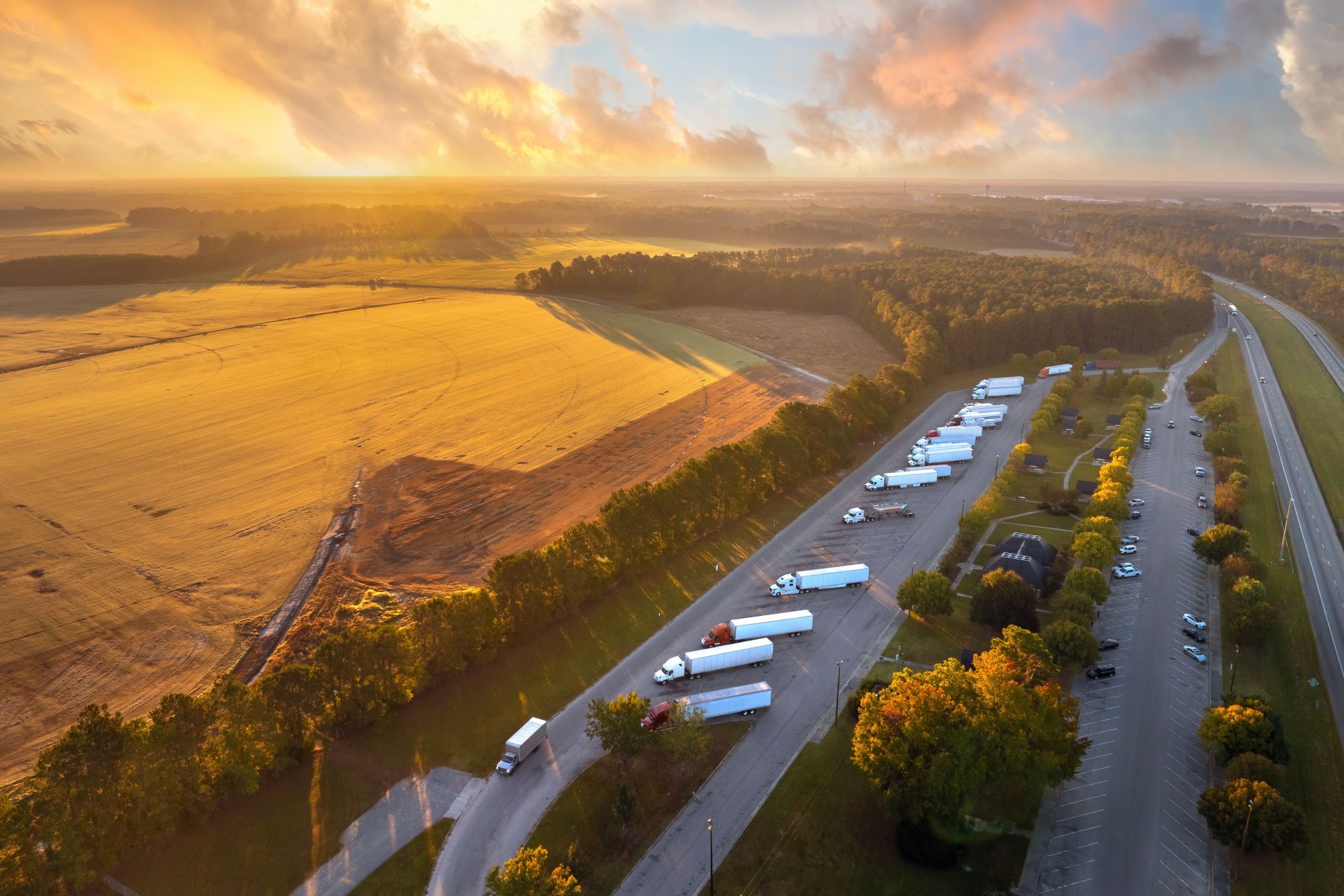
Guest
Как да станете шофьор на камион
Създаден: 26.09.2025
•
Актуализирано: 26.09.2025
В цяла Европа търсенето на професионални шофьори на камиони никога не е било по-голямо. В Обединеното кралство Асоциацията на автомобилните превозвачи изчислява, че през следващите пет години ще са необходими 200 000 нови шофьори на камиони, за да се осигури функционирането на веригите за доставки. Същото е положението и в по-голямата част от Европа. По данни на International Road Transport Union през 2024 г. в Европа ще има 426 000 незаети работни места за шофьори.
Но това създава възможност. Както вече проучихме, транспортната индустрия предлага перспектива за постоянна работа на завършващите училище, които обмислят алтернатива на университета, и на възрастните, които искат да се преквалифицират. Да станеш шофьор на камион е път към сигурни доходи и структурирана кариера.
Мнозина си задават въпроса: как се става шофьор на камион? Отговорът зависи не само от обучението и лицензите, но и от разбирането какво означава да се присъединиш към професията, която поддържа европейската икономика в движение.
Кой може да стане шофьор на камион?
Една от основните привлекателни черти на професията на шофьор е нейната достъпност. За да започнете, не е необходима университетска диплома или дългогодишно специализирано обучение; необходима е само стандартна шофьорска книжка за автомобил (категория В), преди да се работи за придобиване на професионална квалификация.
Минималната възраст за обучение е 18 години както в Обединеното кралство, така и в целия ЕС, което означава, че завършващите училище могат да преминат директно от шофьорска книжка за автомобил към професионално обучение за водачи на тежкотоварни автомобили. Въпреки това много фирми предпочитат международните шофьори да са навършили поне 21 години, като се има предвид допълнителната отговорност, свързана с превозите на дълги разстояния.
Медицинската годност също е важна. Всеки кандидат трябва да премине медицински преглед, преди да получи свидетелство за управление на тежкотоварен автомобил. В Обединеното кралство това включва редица тестове, включително проверка на зрението, измерване на кръвното налягане и скрининг за заболявания като епилепсия, сърдечни заболявания или сънна апнея.
Европейските държави прилагат същите медицински стандарти в целия ЕС, като редовното подновяване гарантира, че водачите ще останат здрави през цялата си кариера.
Колко печели шофьорът на камион?
За много хора, които обмислят да се занимават професионално с шофиране, основният въпрос е: колко печелят шофьорите на камиони?
Отговорът варира в зависимост от местоположението, опита и вида на извършваната работа, но в цяла Европа професията предлага конкурентно заплащане в сравнение с други начални работни места.
● Новият шофьор в Обединеното кралство обикновено започва с около 27 000 GBP годишно. Тези, които започнат работа на дълги разстояния, особено по международни маршрути, могат да получат заплащане от 45 000 GBP - понякога и повече, ако превозват специализирани или опасни товари. those handling special loads, hazardous goods or operating across borders.
● В Испания заплатите обикновено са по-ниски от тези в Обединеното кралство, обикновено около 36 600 евро, въпреки че големите логистични фирми в големите градове могат да предложат повече.
● Полша през последните години се наблюдава голямо търсене на шофьори, но заплатите остават скромни, средно около 92 400 PLN (приблизително 21 690 евро).
● Румъния се намира в долната част на скалата, като шофьорите обикновено получават 80 550 RON (16 000 евро), въпреки че договорите за международен превоз могат значително да увеличат заплащането.
Разбира се, заплатата не е цялата история. Много компании предлагат заплащане за извънреден труд, добавки за храна или бонуси за постигане на целите за доставка. И тъй като търсенето на шофьори не показва признаци на забавяне, тази работа носи и ниво на сигурност, което малко други начални кариери могат да сравнят.
Каква шофьорска книжка за камион ми е необходима?
Преди да можете да седнете зад волана на камион, трябва да притежавате съответната шофьорска книжка. В Обединеното кралство това означава да преминете от стандартната шофьорска книжка за лек автомобил към официално известната като шофьорска книжка за големи товарни превозни средства (LGV) или тежки товарни превозни средства (HGV). Термините често се използват като взаимозаменяеми, но и двата обхващат едни и същи категории професионално шофиране.
Някои хора започват с лиценз от категория C1, който обхваща средни превозни средства с тегло между 3,5 и 7,5 тона - често използвани за по-малки камиони за доставка.
Повечето начинаещи шофьори на камиони обаче се насочват направо към свидетелство за правоспособност от категория C, понякога наричано свидетелство за управление на тежкотоварни автомобили клас 2. Той ви позволява да управлявате твърди превозни средства над 7,5 тона. За тези, които искат да преминат към съчленени товарни автомобили - по-големите превозни средства, които обикновено се използват по маршрути на дълги разстояния и международни маршрути - се изисква свидетелство за правоспособност от категория СЕ (клас 1).
Наред с тези квалификации се издава и свидетелство за професионална компетентност на водача (CPC), което е законово изискване както в Обединеното кралство, така и в ЕС. Този сертификат включва комбинация от първоначално обучение и периодично опресняване, предназначени да поддържат водачите в крак с безопасността, нормативната уредба и уменията на пътя.
Тази система отразява рамката за лицензиране в целия ЕС. Основните разлики между отделните държави са свързани с доставчиците на обучение, свързаните с него разходи, а на някои места и с наличието на места за провеждане на изпити.

Как да получите лиценз за тежкотоварни автомобили
Получаването на свидетелство за управление на тежкотоварни автомобили е първата стъпка към професионалното шофиране. В Обединеното кралство можете да започнете този процес, след като притежавате стандартна шофьорска книжка за автомобил от категория В. Оттам кандидатствате за временно свидетелство за управление на камион, което ви позволява да започнете обучение за управление на големи товарни автомобили.
Самото обучение съчетава теоретични и практически елементи: занятия в класната стая по пътна безопасност и правила, последвани от шофиране под наблюдение на тежкотоварни автомобили. Кандидатите трябва също така да преминат през модули за получаване на Свидетелство за професионална компетентност на водача (CPC), което гарантира, че водачите са подготвени не само за безопасно управление на превозните средства, но и за справяне с ежедневните изисквания на товарните превози.
Колко струва да станете шофьор на камион?
Един от най-често задаваните въпроси от всички, които обмислят тази професия, е колко струва обучението за шофьори на камиони. В Обединеното кралство цените варират в зависимост от доставчика, местоположението и това дали се обучавате за шофьорска книжка категория С или за по-напредналата категория СЕ. Средно новите шофьори могат да очакват да похарчат между 2000 и 3500 паунда, за да покрият разходите за медицински прегледи, такса за временно свидетелство, теоретични изпити, практическо обучение, модули за CPC и окончателен шофьорски изпит. Някои компании, особено по-големите логистични фирми, предлагат схеми за субсидиране или цялостно финансиране на обучението в замяна на трудов ангажимент, което прави този маршрут по-достъпен.
В други части на Европа цифрите не са много различни. В Испания обучението обикновено струва между 2 000 и 3 000 евро за пълно обучение и сертифициране. В Полша тази сума е по-ниска и възлиза средно на 1500-2500 евро. В Румъния разходите за обучение са едни от най-ниските в Европа, като много кандидати плащат около 1000-1800 евро за квалификация, въпреки че заплатите на начално ниво обикновено отразяват тази по-ниска бариера за навлизане.
Колко време отнема да станете шофьор на камион?
Времето, необходимо за придобиване на квалификация за шофьор на камион, зависи от мястото на обучение, вида на свидетелството, към което се стремите, и от това колко бързо можете да си осигурите дати за изпити. В Обединеното кралство повечето хора завършват обучението си и полагат изпитите си в рамките на два до четири месеца. Някои интензивни курсове отнемат само няколко седмици, въпреки че много шофьори смятат, че разпределянето на часовете помага за по-ефективното усвояване на уменията.
В Испания и Полша процесът е подобен, въпреки че по-дългите списъци с чакащи за места за изпити могат да удължат сроковете. В Полша голямото търсене на професионални шофьори е довело до затруднения в центровете за обучение, което означава, че някои кандидати чакат няколко месеца, преди да положат практическия си изпит. В Румъния пътят е един от най-бързите, като обучението и изпитите често приключват в рамките на осем до дванадесет седмици.
Ученето не спира и след получаването на шофьорската книжка. Всеки професионален шофьор трябва да преминава 35-часово обучение по CPC на всеки пет години, за да актуализира уменията си и да се увери, че е готов да спазва най-новите правила и стандарти за безопасност.
Колко време може да шофира шофьор на камион?
След като получите квалификация, работата е свързана със строги ограничения за времето, което можете да прекарате зад волана. Тези ограничения имат за цел да защитят както водачите, така и другите участници в движението, като намалят умората.
В Обединеното кралство и ЕС правилата са едни и същи. Водачите могат да прекарват максимум девет часа зад волана всеки ден, като този период може да бъде удължен до десет часа два пъти седмично. Седмичните ограничения са до 56 часа, като в рамките на две последователни седмици не могат да бъдат повече от 90 часа.
Освен това след 4,5 часа шофиране водачът трябва да си вземе почивка от поне 45 минути. Освен това той има право на дневна и седмична почивка, за да се възстанови, преди да се върне на работа.
Тези правила се следят стриктно, като в превозните средства се монтират тахографи, които записват часовете и гарантират спазването им. За тези, които работят по маршрути на дълги разстояния, като испанските шофьори, които покриват Пиренейския полуостров, или полските превозвачи, които пренасят стоки през източните граници на ЕС, тези ограничения определят ритъма на работа. Те определят кога и къде водачите спират, което прави достъпа до безопасни и сигурни места за почивка жизненоважна част от работния ден.
Започване на работа като шофьор на камион
Да станете шофьор на камион не е само да преминете изпитите. Става дума за влизане в роля, която носи истинска отговорност, но и дългосрочни възможности. С подходящата шофьорска книжка, подходящото обучение и решимостта да приемете живота на пътя, това е кариера, която може да осигури както стабилност, така и напредък.
В SNAP знаем как изглеждат тези пътувания. Ето защо работим с автопаркове и шофьори в цяла Европа, за да ги направим по-безопасни, по-лесни и по-удобни - от сигурни паркинги и по-добри социални съоръжения до интелигентни цифрови инструменти, които спестяват време и стрес. Независимо дали тепърва започвате или шофирате от години, ние сме тук, за да ви подкрепим на всеки километър от пътя.
Изтеглете приложението intruck още днес, за да намерите надеждни паркинги, съоръжения и услуги, където и да се намирате.



